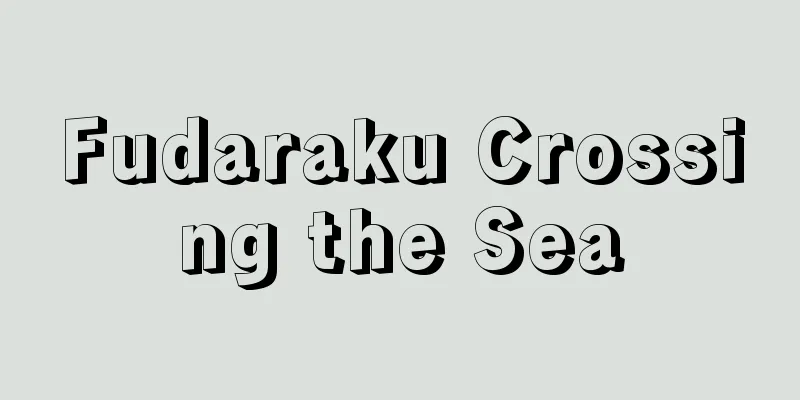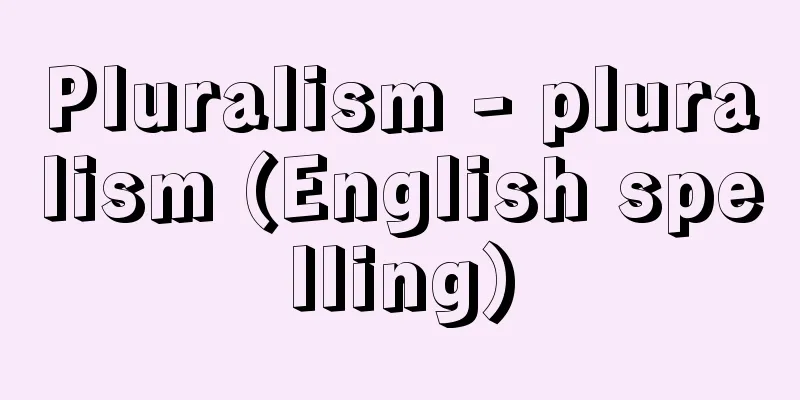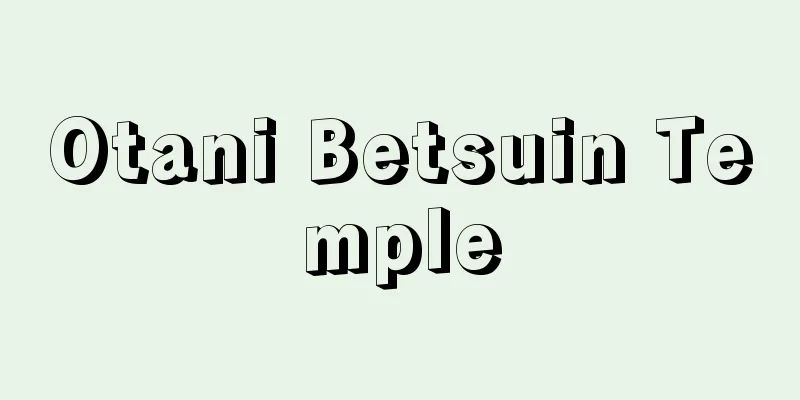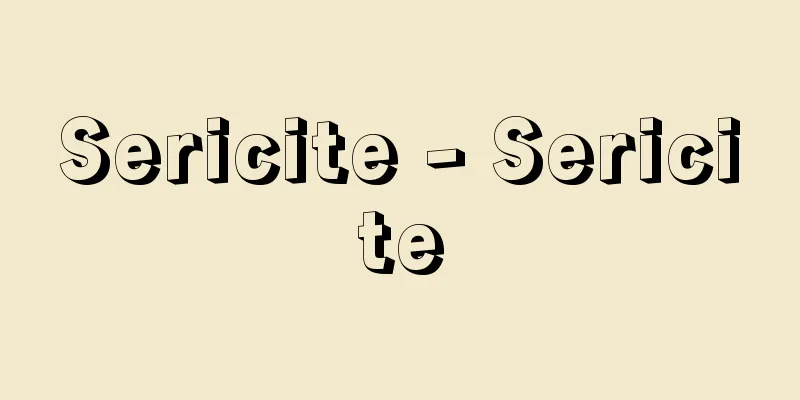Polio - Polio (English spelling)
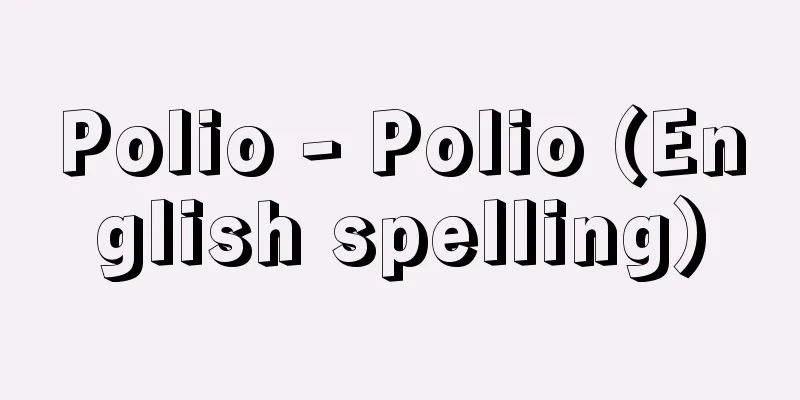
|
Polio is an acute infectious disease caused by the poliovirus. It attacks the gray matter of the spinal nerves, causing cold-like symptoms, followed by sudden paralysis of the legs and arms, which cannot be moved. It was also called acute poliomyelitis, spinal polio, and Heine-Medin disease, but since the spread of the vaccine, it has often been abbreviated to polio. In the past, it was included as a notifiable infectious disease under the Infectious Diseases Prevention Law as acute poliomyelitis, but on June 15, 1959 (Showa 34), it was designated as an infectious disease for which preventive measures should be implemented by Ministry of Health and Welfare Notification No. 182, and became a designated infectious disease along with Lassa fever, which was designated in 1976. It is currently classified as a Class 2 infectious disease under the Infectious Disease Prevention and Medical Care Act (Infectious Diseases Act) that came into effect in 1999. [Noriaki Yanagishita] EpidemiologyPolio has existed since before Christ and is a disease commonly seen all over the world. The infection is mainly transmitted orally through the feces of infected people, and the virus is easily found in sewage. Before the use of the live polio vaccine, there were 2,000 to 3,000 reported cases in Japan every year. In Europe and the United States, the disease was most prevalent among school-age children, but in Japan, more than 90% of cases were infants and children under the age of four. In 1960, a major epidemic occurred mainly in Hokkaido and Kyushu, and the number of reported cases reached 5,606, becoming a social problem. The following year, the Salk vaccine (inactivated vaccine) and Sabin vaccine (live attenuated vaccine), whose effectiveness was attracting attention in Europe and the United States at the time, were administered nationwide. As a result, the situation regarding polio outbreaks changed dramatically and the number of patients dropped sharply, from 2,436 in 1961 to 289 the following year. Within three years of the vaccination, the number of cases had fallen below 100, and from the late 1970s, there were only a few cases per year. This is also thought to be caused by the vaccine virus, and there are currently no cases of natural polio. However, epidemics occur occasionally in Southeast Asian countries, and poliovirus carriers are occasionally found in travelers. This phenomenon is also seen in Western countries, and the World Health Organization (WHO) is working with Rotary International to carry out a campaign to eradicate polio by 2005. [Noriaki Yanagishita] Infection and immunityPoliovirus is excreted in the patient's pharyngeal and laryngeal secretions and feces for several weeks, and infection is primarily via oral infection, and rarely via droplet infection. Infectivity is strongest during the latter half of the incubation period and one week after the onset of symptoms. Neutralizing antibodies are produced one week after natural infection or by vaccination with a live vaccine, reaching a peak one month later and persisting for the rest of a patient's life. Antibodies that a newborn baby inherits from its mother disappear after about six months. [Noriaki Yanagishita] SymptomsThe incubation period is usually 7-14 days. The typical disease type is the paralytic type, but this accounts for only 0.5% of cases. The majority (90-95%) are asymptomatic, with only an increase in antibodies, and the infection is asymptomatic, with the patient developing immunity and recovering without even realizing it. In addition, there is the incomplete type (4-8%), which shows only initial symptoms of fever, catarrhal symptoms in the upper respiratory tract similar to a summer cold, and digestive symptoms, and the non-paralytic type (0.5-1.0%), which shows symptoms of meningeal irritation but does not develop paralysis. [Noriaki Yanagishita] TreatmentIt is preferable for patients to be hospitalized and treated at a designated medical institution for infectious diseases, but there is no specific treatment, so symptomatic treatment is used. During the acute phase (fever), patients are advised to rest in order to prevent the progression of paralysis, and painkillers and sedatives are administered as necessary. Once the fever subsides and the patient enters the recovery phase, the progression of paralysis will stop, so efforts are made to restore function through massage, electrical therapy, hydrotherapy, exercise therapy, etc. Respiratory paralysis and bulbar paralysis may require an iron lung or tracheotomy, and orthopedic treatment is provided for paralysis and deformities as sequelae. [Noriaki Yanagishita] prognosisIf paralysis does not occur, the condition is good. Paralysis occurs when the fever subsides (usually 7 to 10 days after the onset of the disease), and the relaxed paralyzed muscles atrophy 1 to 2 months later, leaving deformities and other aftereffects. Most deaths are due to respiratory failure, and although the mortality rate varies depending on the epidemic, it is usually 5 to 10%. [Noriaki Yanagishita] preventionRoutine vaccination involves orally administering a live attenuated vaccine twice, at least six weeks apart, between the ages of three and 48 months, but it requires mass vaccination within the community, and it is advisable to avoid doing so during the summer. As a side effect, paralysis has been observed in very rare cases (approximately one in 300,000 people), but it is said that this is most likely due to congenital immunodeficiency. Currently, attention is being paid to polio-like paralysis caused by enteric viruses other than polio, such as coxsackievirus and echovirus, and these are called polio-like diseases. [Noriaki Yanagishita] PoliovirusA single-stranded RNA virus belonging to the Enterovirus genus of the Picornaviridae family. It has a diameter of 28 nanometers, 32 capsomeres, no envelope, and is ether-resistant. It is serologically divided into types I, II, and III, but the live attenuated vaccine contains antibodies to all three. It is stable to ether and acid. It is vulnerable to chlorine disinfection and is inactivated at 50°C for 30 minutes. Humans are the only host that can be infected naturally, and there is no relationship between region and season. Serological diagnosis is performed by measuring the complement fixing antibody titer of serum immediately after the onset of symptoms and serum 2 to 3 weeks later, and if the latter serum antibody titer is four times higher than that of the original serum antibody titer, the patient is determined to be infected. The virus is isolated from pharyngeal mucosal secretions and fecal material, and the supernatant obtained by centrifugation is added to tissue culture to observe the cytopathic effect. [Masami Soneda] [References] | | |Source: Shogakukan Encyclopedia Nipponica About Encyclopedia Nipponica Information | Legend |
|
ポリオウイルスによる急性伝染病で、脊髄(せきずい)神経の灰白質が侵され、夏かぜのような症状が現れたのち、急に足や腕が麻痺(まひ)して動かなくなる疾患をいう。急性灰白髄炎、脊髄性小児麻痺、ハイネ‐メジン病Heine-Medinともよばれていたが、ワクチンの普及以来、単にポリオと略称されることが多くなった。かつて、伝染病予防法では急性灰白髄炎として届出(とどけいで)伝染病に含まれていたが、1959年(昭和34)6月15日厚生省告示第182号により予防方法を施行すべき伝染病として指定され、76年指定のラッサ熱とともに指定伝染病となった。現在は、1999年施行の感染症予防・医療法(感染症法)により2類感染症に分類されている。 [柳下徳雄] 疫学ポリオは紀元前から存在し、全世界に普遍的にみられた疾患で、患者の糞便(ふんべん)が感染源となっておもに経口感染し、ウイルスは下水中に容易にみいだされた。日本でもポリオ生(なま)ワクチンの使用前までは毎年2000~3000人の届出患者があり、欧米では学童期に多発したが、日本では4歳以下の乳幼児が90%以上を占めていた。1960年に北海道と九州を中心に大流行し、届出患者数が5606人に達して社会問題化した。当時欧米でその効果が注目されていたソークワクチン(不活化ワクチン)とセービンワクチン(弱毒生ワクチン)の接種を翌年から全国一斉に実施した結果、ポリオの発生の様相が一変して患者数が激減し、1961年の2436人が翌年には289人に減り、接種実施後3年で100人を割って、70年代後半からは年間数人の発生をみるにとどまった。これもワクチンのウイルスによる発症とみられるもので、自然発生によるポリオは皆無というのが現状である。しかし、東南アジア諸国ではときに流行することがあり、旅行者による国内持ち込み(ポリオウイルス保有者)がときどき発見される。こうした現象は欧米諸国でも同様であり、WHO(世界保健機関)では国際ロータリークラブと連携して2005年をめどにポリオ絶滅の運動を展開している。 [柳下徳雄] 感染と免疫ポリオウイルスは患者の咽頭(いんとう)や喉頭(こうとう)の分泌物および糞便中に数週間にわたって排泄(はいせつ)され、主として経口感染、まれに飛沫(ひまつ)感染する。感染力は潜伏期後半と発病後1週間がもっとも強い。免疫は、自然感染および生ワクチン接種を問わず1週間後から中和抗体を生じ、1か月後にピークに達したのち、一生持続する。新生児の母親から受け継ぐ抗体は、約6か月で消失する。 [柳下徳雄] 症状潜伏期は普通7~14日。典型的な病型は麻痺型であるが全体の0.5%にすぎず、大部分(90~95%)は無症状で抗体の上昇だけがみられ、本人も知らないうちに免疫ができて治ってしまう不顕性感染である。そのほか、熱が出て夏かぜ様の上気道のカタル症状や消化器症状を示す初期症状だけの不全型(4~8%)と髄膜刺激症状を示すが麻痺の発現しない非麻痺型(0.5~1.0%)がある。 [柳下徳雄] 治療感染症指定医療機関に入院して治療するのが望ましいが、特異療法はなく対症療法を行う。急性期(有熱期)には麻痺の進行を抑制するために安静を守り、必要に応じて鎮痛剤や鎮静剤を投与する。解熱して回復期に入ると麻痺の進行はなくなるので、マッサージ、電気療法、水治(すいじ)療法、運動療法などを行い機能回復に努める。呼吸麻痺や延髄麻痺には鉄の肺や気管切開などが必要となり、後遺症としての麻痺や変形に対しては整形外科的治療を行う。 [柳下徳雄] 予後麻痺がおこらなければ良好である。麻痺は熱が下がるころ(通常発病後7~10日)にみられ、弛緩(しかん)した麻痺筋は1~2か月後に萎縮(いしゅく)して変形などの後遺症を残す。死因の多くは呼吸障害で、死亡率は流行によっても異なるが通常5~10%である。 [柳下徳雄] 予防定期接種は生後3か月から48か月の間に6週間以上の間隔で2回、弱毒生ワクチンを経口服用するが、地域内での集団接種が必要で、夏期を避けて行うのが望ましい。副作用としてごくまれ(約30万人に1人弱くらい)に麻痺症例がみられるが、先天性免疫不全の可能性が高いといわれる。 なお、現在ではポリオ以外の腸管ウイルスであるコクサッキーウイルスやエコーウイルスなどによるポリオ様の麻痺が注目されており、ポリオ様疾患とよばれる。 [柳下徳雄] ポリオウイルスピコルナウイルス科のエンテロウイルス属に属するRNA1本鎖ウイルス。直径28ナノメートル、カプソメア数32で、エンベロープ(被膜)はなく、エーテル耐性である。血清学的にⅠ・Ⅱ・Ⅲ型に分けられるが、弱毒生ワクチンにはすべての抗体が含まれている。エーテルや酸に安定。塩素消毒に弱く、50℃30分間で不活化される。ヒトは自然感染する唯一の宿主であり、地域や季節に関係はない。血清学的診断は、発病後すぐの血清と2~3週後の血清の補体結合抗体価を測定し、後者の血清抗体価が4倍以上高い場合は感染したものと判定する。ウイルスの分離は、咽頭粘膜分泌物や糞便材料を対象とし、遠心分離した上澄みを組織培養に加えて細胞変性効果をみる。 [曽根田正己] [参照項目] | | |出典 小学館 日本大百科全書(ニッポニカ)日本大百科全書(ニッポニカ)について 情報 | 凡例 |
>>: Polyvinyl chloride - po-rien-ka-biniru (English spelling) polyvinyl chloride
Recommend
Willamette University
...The capital of the state of Oregon in the nort...
Kansuke Yamamoto
A military strategist of the Muromachi period. Al...
Kernicterus
What is the disease? This is a disease in which t...
Kanjin - Kanjin
〘noun〙① (━suru) To encourage or entice. In particu...
ephelides
…Medically known as ephelides, these irregularly ...
Kajiya tree frog - Kajiya tree frog
...Many tree frogs lay eggs in small puddles. In ...
Ramses [II] - Ramses
The third king of the 19th Dynasty of ancient Egyp...
Yamagiwa Katsusaburo - Yamagiwa Katsusaburo
Pathologist. Born in Ueda as the third son of Yam...
Bonito fishing
...It is estimated that approximately 1.3 million...
The culprit - cucumber
A book on natural sciences written by physicist H...
Nabataean Kingdom
The kingdom of the Nabataeans (Greek: Nabataioi, A...
The Supreme Secret - Mujōhyō (English)
A type of treatise on Taoist doctrine compiled by ...
Tedori River
A river that flows through the southern part of th...
Shun'e
[Raw] Permanent 1 (1113) [Dead]? A poet of the lat...
Euler angle - Euler angle
When discussing rotational motion, these are the t...
